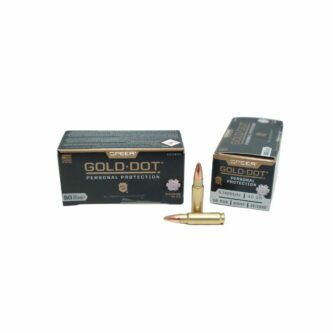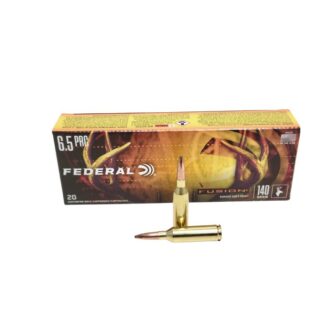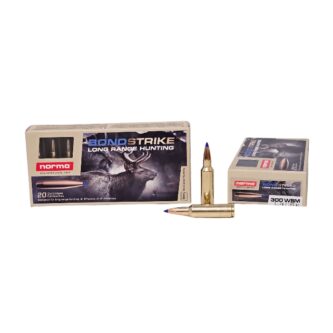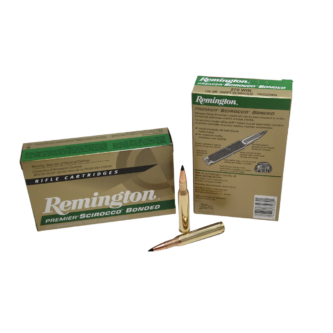Bonded bullets have become a linchpin of ammunition technology, providing exceptional performance for hunting, self-defense, and law enforcement applications. But what is this all-important technology that’s so crucial to the modern shooter? In this article, we delve into the world of bonded bullets and explore the groundbreaking innovations from leading brands like Nosler, Federal, Remington, Norma, and Hornady.
Bonded Ammo at KIR
What Are Bonded Bullets?
The term “bonded bullets” refers to a process where the bullet’s jacket is chemically or mechanically bonded to the lead core. This bond prevents the jacket and core from separating upon impact, ensuring better weight retention and deeper penetration. This technology creates bullets that can punch through tough barriers while still expanding reliably, making them a favored choice for hunting and self-defense. Bonded bullets are usually made with a lead core.
Pros and Cons of Bonded Bullets:
As with any technology, however, there are both advantages and disadvantages associated with bonded bullets.
Pros of Bonded Bullets:
- Weight Retention: The primary advantage of bonded bullets is their high weight retention. The bonding process secures the jacket to the core, reducing the chance of separation upon impact. This means that the bullet maintains its weight, leading to deeper penetration.
- Consistent Expansion: Bonded bullets typically expand in a controlled, reliable manner, making them more predictable in their terminal performance. This consistent expansion, coupled with excellent weight retention, can result in a larger wound channel, which is crucial in both hunting and self-defense situations.
- Barrier Penetration: Bonded bullets are often superior at penetrating tough barriers without significant fragmentation, making them popular for law enforcement and self-defense uses where barriers like glass, wood, or heavy clothing may be encountered.
- Versatility: They are suitable for a wide range of applications, from hunting to self-defense. This versatility makes bonded bullets a good all-around choice for many shooters.
Cons of Bonded Bullets:
- Cost: Bonded bullets are typically more expensive to produce than traditional bullets, and this cost is often passed on to the consumer. This means that they might not be the best choice for applications like target practice, where large volumes of ammunition may be used. But, at KIR we always have ammunition on sale and offer free shipping on ammunition if your order is over $199.
- Availability: While the market for bonded bullets is growing, their availability may not be as widespread as non-bonded ammunition.
- Overpenetration Risk: While the deep penetration of bonded bullets can be an advantage in hunting or self-defense situations, it can also potentially lead to overpenetration. This could be a concern in self-defense scenarios where there’s a risk of hitting an unintended target.
- Not Necessary for All Game: In hunting small game or varmints, the high weight retention and deep penetration of bonded bullets are not necessary, and may even be detrimental by causing less damage and allowing the game to escape.
How are Bonded Bullets Made?
Bonded bullets are created through a process that chemically or mechanically bonds the bullet jacket to the lead core. This bond is designed to ensure that the jacket and core stay together upon impact, resulting in better weight retention and deeper penetration. While the specifics of the process can vary between manufacturers, here is a generalized overview of how bonded bullets are made:
1. Core and Jacket Preparation
The initial stage involves preparing the lead core and the bullet jacket. The lead core is often shaped into a cylindrical form, while the jacket (often made of copper or a copper alloy) is typically a cup-like shape that will ultimately encase the lead core.
2. Inserting the Core into the Jacket
The lead core is then inserted into the jacket. At this stage, the bullet might look a lot like any other bullet, but the bonding process that follows sets it apart.
3. Bonding Process
The actual bonding process can take different forms depending on the specific method employed by the manufacturer.
- Electrochemical Bonding: This involves submerging the bullet in a special electrolytic solution. An electric current is passed through the solution, promoting the bonding of the jacket and the core on a molecular level.
- Mechanical Bonding: This typically involves applying extreme pressure or heat to the bullet to bond the jacket and the core together. For example, a process called “pressure bonding” or “hot bonding” involves heating the bullets to a high temperature and then applying pressure. This method causes the metal of the jacket to “flow” into the lead core, creating a solid bond.
- Molecular/Chemical Bonding: Some manufacturers use proprietary methods that involve a chemical reaction to create a bond between the jacket and the core. These processes are often closely guarded secrets.
4. Final Forming
Once the bonding process is complete, the bullet goes through the final shaping or forming process. This often involves further pressing to shape the bullet and can include adding features such as a polymer tip or a boat-tail design to enhance the bullet’s aerodynamic properties.
It’s important to note that the specific processes and materials used can vary significantly between different manufacturers and even different lines of bullets from the same manufacturer. Each company has its own proprietary methods to optimize performance according to their design goals.
Bonded Bullets for Self Defense Ammo?
While bonded bullets can be more expensive than traditional bullets, the potential benefits they provide in self-defense situations can make them worth the extra cost. Remember, the best bullet for self-defense is the one that works reliably in your firearm and meets your specific needs and circumstances.
As with any ammunition, it’s also crucial to train regularly with your self-defense ammo to understand its recoil and performance characteristics. And always adhere to all safety practices when handling and using firearms.
Are Bonded Bullets Better for Hunting?
As a hunter, the moment of truth comes when you pull the trigger. At that decisive moment, the quality of your ammunition can make all the difference. This is where bonded bullets come into the picture, offering superior performance that can elevate your hunting experience. The premise of bonded bullets lies in their construction. By chemically or mechanically bonding the bullet’s jacket to the lead core, these bullets achieve better weight retention and deeper penetration upon impact. This design is particularly useful in hunting situations, where the bullet needs to punch through tough hide and bone to reach vital organs for a quick, humane kill. A bonded bullet ensures that the jacket and core stay together, even when striking heavy bone. This leads to consistent, reliable performance, which is why many hunters choose bonded ammunition for hunting medium and large game.
In Which Calibers Can I Buy Bonded Bullets?
Bonded bullets come in a wide variety of calibers. In fact, you can get rifle ammunition and handgun ammunition with bonded bullets in almost any caliber including 9mm, .270, 45 Long Colt, 30-06, 45-70 Govt, and many more.
Bonded Bullets vs. Jacketed
The main difference between bonded and jacketed bullets lies in whether the jacket and the core are bonded (fused) together. Bonded bullets tend to retain more weight and penetrate deeper because the jacket and core stay together upon impact. On the other hand, traditional jacketed bullets may expand more quickly upon impact but may also fragment, with the jacket and core separating. The right choice depends on the specific needs of the shooting application. For instance, bonded bullets are often preferred for hunting large game or for self-defense situations, while traditional jacketed bullets can be excellent for target shooting or hunting smaller game.
Bonded Bullets
Bonded bullets undergo a process that bonds the jacket to the lead core. This bonding can be achieved through various methods, such as heat or pressure, or a combination of both. The purpose of this process is to ensure that the jacket and core stay together after the bullet strikes the target.
The primary advantage of bonded bullets is their high weight retention. Because the jacket and core stay together, the bullet retains more of its weight upon impact, resulting in deeper penetration. Bonded bullets are particularly beneficial when shooting through tough barriers like thick clothing, glass, or bone because they maintain their structure and continue their path after striking these hard objects.
Jacketed Bullets
Jacketed bullets consist of a soft lead core enclosed within a harder metal jacket, usually made of copper or a copper alloy. The jacket gives the bullet more strength, reduces fouling in the barrel by keeping lead from direct contact with it, and helps the bullet maintain its shape during flight for better accuracy.
However, unlike bonded bullets, the jacket and core in traditional jacketed bullets are not bonded together. As a result, upon impact, the jacket and core can separate, potentially leading to less weight retention and penetration.
Some Popular Bonded Bullet Brands & Technology:
Nosler AccuBond
Nosler’s AccuBond bullets are a perfect example of how bonded technology can revolutionize shooting. AccuBond combines Nosler’s traditional copper-alloy jacket with its unique lead-alloy core. The result? A bullet that demonstrates exceptional accuracy, reliable expansion, and high weight retention. The streamlined polymer tip resists deformation in the magazine and initiates expansion upon impact. All these features converge to make AccuBond an ideal choice for hunters who require maximum performance from their ammunition.
Remington Core-Lokt and Golden Saber
Remington is another prominent player in the bonded bullet game, with its Core-Lokt and Golden Saber lines standing out. The Core-Lokt bullet, often hailed as the “deadliest mushroom in the woods,” has been a favorite among hunters for years. Its progressive tapering jacket design, locked to the lead core, provides controlled expansion and high weight retention for deep penetration and knockdown power.
On the other hand, the Golden Saber line is engineered for law enforcement and self-defense use. These rounds feature a brass jacket that’s mechanically bonded to the lead core, ensuring exceptional weight retention, deep penetration, and massive expansion – a deadly combination when every shot counts.
Hornady InterBond, DGX, and InterLock
Hornady’s contributions to the world of bonded bullets are nothing short of impressive. The InterBond line employs a proprietary bonding process, bringing together the best characteristics of SST and InterLock bullets to offer a round that delivers deep penetration, high weight retention, and lethal expansion.
The InterLock bullet, meanwhile, is more traditional but equally effective. It features a ring embedded in the bullet’s core that locks it to the jacket, delivering controlled expansion and high weight retention. This technology is a favorite among hunters, thanks to its ability to perform consistently, regardless of the range.
Federal Fusion:
Federal Fusion ammunition is a popular line of hunting ammunition that features a bonded bullet design. The goal of this ammunition is to deliver high performance at a more affordable price point than some other premium hunting rounds.
Key Features of Federal Fusion Ammunition:
- Electrochemically Bonded Bullet: The Federal Fusion process involves an electrochemical process that molecularly fuses the jacket to the core. This process creates a perfectly uniform jacket and ensures excellent weight retention upon impact, resulting in deep penetration and a large wound channel.
- Skived Tip: The bullets in Federal Fusion ammunition feature a skived (notched) tip. These notches assist in initiating controlled, consistent expansion even at a variety of velocities.
- Boat-Tail Design: Fusion bullets also feature a boat-tail design, a narrowing at the base of the bullet that reduces air resistance and helps to increase the bullet’s flight stability and accuracy over long distances.
- Optimized for Deer Hunting: While Federal Fusion ammunition is suitable for hunting a wide range of game, it’s particularly optimized for deer hunting. The bullet weight, velocity, and bonded design all come together to deliver a bullet that provides rapid, controlled expansion, high weight retention, and deep penetration, making it ideal for taking down deer.
Federal Fusion ammunition is available in a wide range of calibers, so hunters can choose the load that best suits their particular firearm and hunting needs.
Norma Bondstrike
The Norma Bondstrike line of ammunition is designed specifically for long-range hunting. This ammo incorporates a variety of features that make it effective at extended distances. The Norma Bondstrike ammunition provides excellent long-range precision and terminal performance, making it an excellent choice for hunters who need a reliable, high-performing bullet for longer shots. It’s particularly effective for medium to large game, delivering deep penetration and high energy transfer to ensure a quick, ethical kill.
Norma Bondstrike Features:
- Bonded Design: The bullet uses a bonded design which chemically or mechanically bonds the bullet jacket to the lead core. This ensures high weight retention and deep penetration, especially important for taking down larger game.
- Streamlined Polymer Tip: Bondstrike bullets feature a specially designed, aerodynamically efficient, polymer tip that reduces drag and ensures a flat trajectory for superior long-range performance. This tip also aids in rapid expansion upon impact.
- Boat-Tail Design: The Bondstrike bullets feature a boat-tail design, which improves their ballistic efficiency, enabling them to maintain velocity over longer distances.
- High Ballistic Coefficient (BC): The bullet design gives it a high BC, which makes it less affected by wind drift and retains velocity better at longer ranges.
Where to Buy Bonded Bullets
Bonded bullets represent a significant advancement in ammunition technology. By enhancing weight retention and penetration, they provide the shooter with a more reliable and effective round, regardless of the application. The products from Nosler, Remington, Norma, Federal, and Hornady, among others, showcase the pinnacle of this technology, continuously pushing the boundaries of what ammunition can achieve.
Here at KIR Ammo, we’re proud to offer a wide selection of ammunition featuring this innovative, Bonded Bullet, technology. Whether for hunting, self-defense, or target shooting, you can trust bonded bullets to deliver when it matters most.




